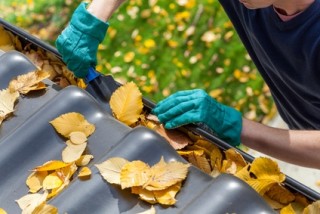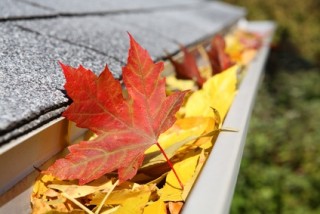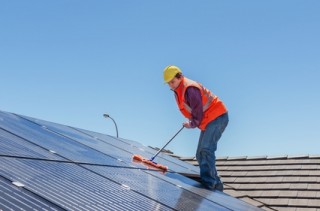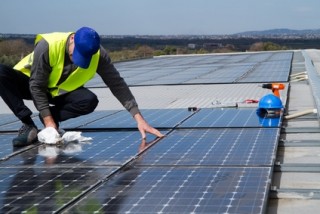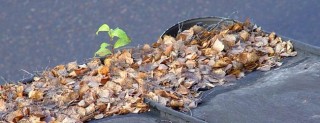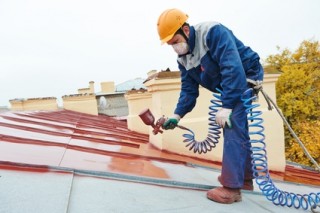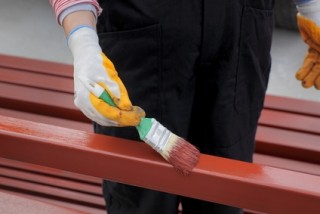How to properly maintain a prefabricated steel hall?
Added 21.04.2015WASHING AND CLEANING OF WALL AND ROOF SHEATHING OF STEEL HALLS
Prefabricated hall wall cladding
The cleaning and maintenance of all types of external cladding of prefabricated halls can be carried out by ladders and platforms as standard, and in exposed cases also by climbing equipment.
The actual cleaning of the hall cladding is carried out with a high-pressure cleaning unit, e.g. by KARCHER, where high quality can be achieved by the correct temperature and water flow setting, the nozzle used and additional devices. In case of heavy soiling of the cladding, chemical products can be used which are naturally degradable and therefore do not threaten to pollute the environment. Nevertheless, chemical products are used only to a minimum extent. Logically, washing and cleaning is carried out from top to bottom so that the dirty water flows downwards. The slope of the nozzle must always be directed in such a way that it does not run into windows or wall cladding. This is especially true for cassette cladding and sandwich panel cladding, positioned horizontally.
Hall roof
Roof sheathing on steel halls is usually made either of panels filled with polyurethane foam or as a classic stacked sandwich with mineral wool. The top sheet is made up of trapezoidal profiles or profiles imitating classic baked roofing of various colours and shapes. The renowned manufacturer and our supplier of RUUKKI roof panels and sheets, made of high-quality Finnish steel, surface-treated, which provides a technical warranty of 30 - 50 years for its products, recommends the following maintenance procedure for roofing and gutters:
Immediately after installation of the hall, all loose objects such as excess fasteners, pieces of roofing material, chips and splinters from drilling and other metal particles should be removed from the roof and gutter systems.
To ensure optimum functionality and longevity of the roof, you should regularly inspect the condition of the roof. If you find any damage to the finish, you should repair it immediately. This will ensure the longevity of your hall roof.
Usually the snow on the roof of the hall will not stick and its weight will not exceed the load capacity of the roof. However, if it is necessary to remove the snow from the roof, it is recommended to leave a layer of approx. 100 mm on the roof to prevent damage to the roof during snow removal.
Visual inspection of panels and roof sheets
A visual inspection of the surfaces is normally carried out every year as part of the routine inspection. A thorough inspection should then be carried out every 5 years after installation of the roof sheeting. Thereafter, it is optimal to inspect the roof surface every two years at the latest.
Inspection of screws and fasteners
Check that all fasteners are held in place and are not corroded. Damaged or loose fasteners can cause water leakage, corrosion or even deformation of the structure. If a joint is damaged, it must be repaired immediately or replaced with a stronger joint.
Check the surface finish
The surface finish is checked for colour fastness and the overall surface of the roof cladding. The roof gutter and edges of the eaves systems must also be checked. Bubbles, flaking of the finish, inconsistent fading of the paint, and cracks or scratches indicate that the finish is in urgent need of professional repair.
Cleaning of gutter systems
The cleaning interval for gutter systems on sheds is generally one year. If there is a risk of leaf and debris infestation, it is recommended to check twice a year - always before and after winter. Clogged or only heavily soiled gutter systems can hold increased moisture and therefore corrode or freeze.
The rain will usually take care of keeping the painted roofing and guttering clean as normal. However, mechanical debris such as leaves, dust, ash, moss, should be mechanically removed from the roof, gutters and gutter systems once a year.
Roof cleaning
Corrosion occurs where there is dirt and moisture, as the surface is always damp under the dirt. A dirty shed roof also spoils the visual impression and image of the company.
To clean the finish, it is advisable to use a soft brush and water or pressurised water. Resistant dirt is removed using a cleaning agent suitable for the surface with the given colour finish.
Please note that inappropriate or harsh cleaning agents can damage not only the paint finish but also the steel plate.
Paint repairs and gutter maintenance
We also repair small scratches and damage. Even small defects can result in major damage or corrosion. When making repairs, it is essential to use only paints appropriate to the specific finish being repaired.
When repairs are done by hand, we use the smallest brush possible. If one coat of paint is damaged, one coat of paint will also suffice. If the damage is deeper - extending to the zinc layer, it is necessary to apply two coats of paint. The second coat is applied after the first coat has dried properly.
Corrosion may occur in the folds and on the edges of the gutters. This is more common on low-slope roofs. You can prevent corrosion from occurring by painting the edges of the eaves after the roof has been installed. For this reason, it is also forbidden to cut or cut sheet metal parts by grinding with cutting wheels. Grinding galvanized and painted sheet metal can create galvanic cells that lead to edge corrosion over time. For this reason, sheet metal is cut.
Repainting of the roof finish
If you are considering recoating the entire roof surface, you must first check that the roof and its supporting structure is not seriously damaged in any place and that the original coating on the base course is holding up well. If significant damage is found or if the finish is irregularly mottled or faded, consult a professional about the whole process and together suggest the most appropriate and effective course of action to implement the coating renewal plan.
The end-of-life of the coating, i.e. the time when a new coating should be applied to the roof, cannot be exhaustively determined as it is influenced by many factors. It is the colour and type of coating itself, the elevation - weathering, the shape and pitch of the roof, the method of construction and installation. The worst conditions are those of the finish on the sunny south side of the roof, especially if the roof is dark in colour.

